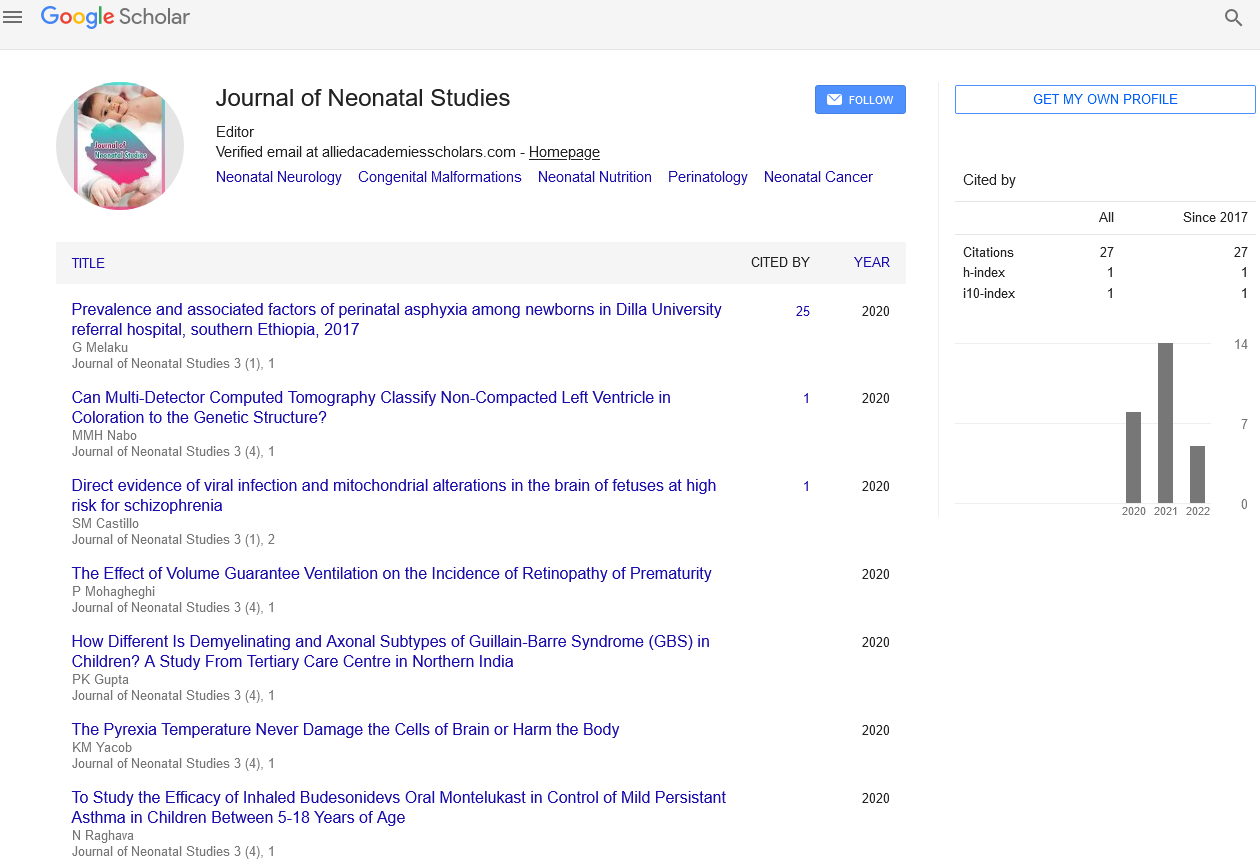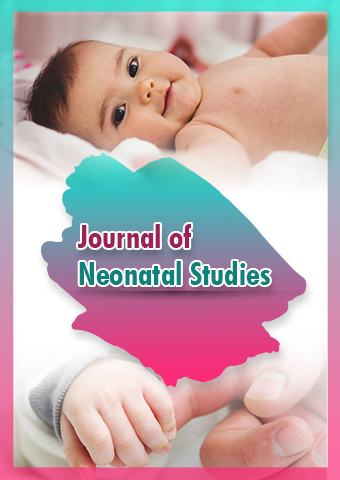Opinion Article - Journal of Neonatal Studies (2024) Volume 7, Issue 6
Newborn Assessment: The First Step in Lifelong Health
- Corresponding Author:
- Madeleine Quinn
Department of Neonatology, Victoria University of Wellington, New Zealand
E-mail: Madquinn@vuw.ac.nz
Received: 04-Nov-2024, Manuscript No. JNS-24-150542; Editor assigned: 06-Nov-2024, PreQC No. JNS-24-150542 (PQ); Reviewed: 20-Nov-2024, QC No. JNS-24-150542; Revised: 24-Dec-2024, Manuscript No. JNS-24-150542 (R); Published: 31-Dec-2024, DOI: 10.37532/JNS.2024.7(6).302-303
Introduction
The newborn assessment is a critical process that ensures the immediate health and well-being of a baby. It’s a comprehensive evaluation that helps healthcare providers identify any potential issues early on, allowing for timely interventions. Here’s a detailed look at the various aspects of newborn assessment.
Description
Initial physical examination
APGAR score: The APGAR score, developed by Dr. Virginia Apgar, is a quick test performed at 1 and 5 minutes after birth. This test assesses five criteria: Appearance (skin color), pulse (heart rate), grimace response (reflexes), activity (muscle tone), and respiration (breathing rate and effort). Each criterion is scored between 0 and 2, with a maximum score of 10.
Vital signs: This includes measuring the baby’s temperature, heart rate, breathing rate, and blood pressure. These measurements provide a baseline for the newborn’s health and help detect any immediate health concerns.
Physical measurements: Weight, length, and head circumference are measured to determine if the baby falls within the expected range for their gestational age. These measurements can indicate the baby’s overall health and development status.
Detailed head-to-toe examination
Skin: Inspecting the skin involves checking for color, texture, rashes, and birthmarks. Jaundice, characterized by yellowing of the skin, is also assessed as it may indicate liver issues or blood type incompatibilities.
Head and neck: The shape and size of the head are examined for any abnormalities such as caput succedaneum (swelling) or cephalohematoma (blood collection). The fontanelles (soft spots) on the baby’s head are checked for any unusual bulging or depression.
Eyes, Ears, Nose, and Throat (EENT): The eyes are checked for symmetrical and responsive pupils, clear nasal passages, and any malformations in the ears or mouth. A hearing screening is typically performed to detect any hearing impairments.
Chest and lungs: Listening to the baby’s breath sounds and heartbeats helps identify any respiratory or cardiac conditions that may require further evaluation.
Abdomen: Palpating the abdomen helps assess organ size and the presence of any masses. The umbilical cord is also inspected for signs of infection.
Genitalia and anus: Examining the genitalia and anus ensures normal anatomical development. The anus is checked for patency, and the first meconium (baby’s first stool) is observed.
Musculoskeletal: Symmetrical limb movement, joint flexibility, and spine alignment are checked.
Any congenital dislocations or deformities are noted.
Neurological examination: The baby’s reflexes, muscle tone, and responsiveness are assessed. Common reflexes include the Moro (startle) reflex, grasp reflex, and sucking reflex.
Specialized screenings and tests
Metabolic and genetic screening: A blood sample is used to identify metabolic or genetic disorders such as Phenylketonuria (PKU), hypothyroidism, and cystic fibrosis. Early detection allows for timely interventions that can significantly improve outcomes.
Hearing screening: Essential for early detection of hearing loss, this screening ensures timely intervention for optimal development.
Congenital heart defect screening: Using a pulse oximeter, this test measures oxygen levels to identify critical congenital heart defects early. Early detection can lead to life-saving interventions.
Bilirubin screening: Since jaundice is common in newborns, this screening helps manage and prevent severe hyperbilirubinemia, which can cause brain damage if left untreated.
Importance of timely intervention
Early detection and intervention are crucial in ensuring a healthy start for the newborn. Identifying potential health issues allows healthcare providers to address them promptly, improving the baby’s chances of healthy development. Timely interventions might include specialized care, treatments, or referrals to pediatric specialists.
Parental guidance and support
Educating parents about newborn care is an integral part of the assessment process. Providing guidance on feeding, sleeping patterns, recognizing signs of illness, and essential follow-up appointments reassures and empowers new parents. Support from healthcare providers helps parents navigate the challenges of caring for a newborn.
Conclusion
A thorough newborn assessment sets the stage for a lifetime of health and well-being. By diligently evaluating and monitoring these tiny new lives, healthcare providers can ensure that every baby gets the best possible start.

